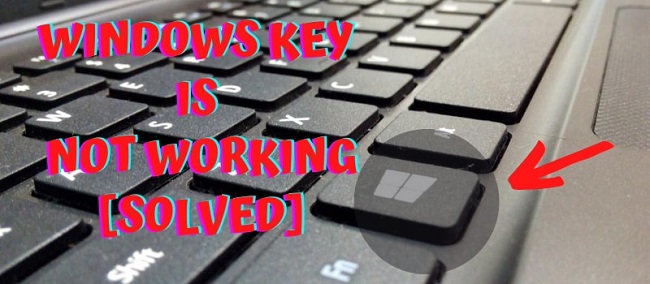The “Windows cannot do disk checking on this volume because it is write protected” issue appears when your volume or drive is damaged or marked as Read Only. You may look for bad sectors and verify the integrity of your system files with CHKDSK, a command-line service included into Windows.
Occasionally, the utility’s execution will result in a message informing you that the drive is corrupted or write-protected. You won’t be able to make any changes to or remove anything on a write-protected device.
That the volume is read-only is shown by the write-protected label. Here you’ll find in-depth instructions for resolving the “windows cannot run disk checking on this volume because it is write protected” error. Because it has a security feature that prevents unauthorized changes.

Understanding the “Windows Cannot Run Disk Checking on This Volume Because it is Write Protected” Error
The “Windows Cannot Run Disk Checking on This Volume Because it is Write Protected” error is a notification that appears when you attempt to perform a disk check on a volume or drive but encounter a roadblock.
It signifies that Windows is unable to execute the disk checking process because the selected volume is write-protected. In simpler terms, the volume or drive you are trying to scan has restrictions in place that prevent any modifications or repairs, including disk checking.
This error can occur due to various factors, and understanding its meaning is crucial for resolving it effectively.
Read Also:
- Set CPU Priority To Prefer Foreground Apps Windows 8.1
- Windows Cannot be Installed to this Disk. The Selected Disk is of the GPT Partition Style
- Windows Resource Protection Found Corrupt Files But Was Unable To Fix Some of Them.
What is s CHKDSK Command Prompt
An error message prompting you to run CHKDSK indicates that you have a built-in utility at your disposal for troubleshooting. Nonetheless, this convenience can pick up stray mistakes from time to time. Windows cannot check the drive since it is write-protected, etc.
It occurs when the volume on a drive has been protected in a certain way and cannot be written to. Turning off these safety measures would aid in eliminating the possibility of an error.
Potential Causes of the Error
- Write Protection Enabled: The most straightforward cause of this error is that the selected volume or drive has write protection enabled. Write protection is a security measure that prevents any changes, including disk checking, from being made to the drive.
- Corrupted File System: A corrupted file system on the volume can lead to write protection and trigger this error. This corruption may result from abrupt system shutdowns, power outages, or other factors.
- Malware or Virus Infection: Malware or viruses can manipulate the file system and apply write protection as a defensive measure to protect themselves from removal.
- Hardware Switch or Lock: In some cases, external drives, such as USB flash drives or external hard drives, may have physical switches or locks that enable write protection. Accidentally setting these switches can lead to the error.
How to Fix Windows Cannot Run Disk Checking on This Volume Because it is Write Protected
Now that you understand the two most common causes of “Windows cannot execute disk testing on this volume,” following section will focus on simple fixes to the problem. Alright, so let’s get going!
Method 1: Clear Read-Only in Registry Editor
If you’re having trouble using the CMD command or diskpart to disable write protection on the drive volume, you may always try editing the registry instead. What you need to do is as follows:
Step 1: Pressing the Windows key plus R simultaneously brings up the run command prompt.
Step 2: When the prompt appears, type Regedit and press Enter. In registry editor, navigate to this location.
HKEY_LOCAL_MACHINE\SYSTEM\CurrentControlSet\Control\StorageDevicePolicies
Step 3: The next step is to find the write protection and then alter it. Alter the one to a zero in the digit value.
Method 2: Remove Write Protection via Diskpart
To partition a hard drive, you can use the command-line tool DiskPart. Here, we’ll use it to alter the drive’s characteristics. Here’s how to put it to work:
Step 1: One must first open the Start Menu and then enter “diskpart” to have access to the utility.
Step 2: Once the utility has loaded, enter: List volume
Step 3: Type as and inspect the volumes of your hard drive. To choose the volume, click the corresponding number.
Step 4: Switch out the # for the letter of a different drive.
Step 5: and input: Specifies a read-only attribute set on a cleared disk.
Step 6: Hang in there until it’s done.
Method 3: Scan Drive for Corruption
Last but not least, examine your hard drive for corrupted files, as this is a common source of the “cannot run disk checking write protected” error. The procedure is as follows:
Step 1: Open the “This PC” program.
Step 2: Right-click the malfunctioning drive and choose “Properties” from the drop-down menu.
Step 3: Select the Tools menu.
Step 4: Click the “Check” button once you get there.
Step 5: Click “Yes” on the User Account Control dialog box if it appears.
Step 6: Hang tight until the scan is done.
Some Easy Methods to Fix the “Windows Cannot Run Disk Checking on This Volume Because it is Write Protected” Error
Now, let’s explore practical methods to resolve this error and enable successful disk checking on the affected volume or drive:
- Disable Write Protection (For Removable Drives):
- If you’re dealing with a removable drive like a USB flash drive or external hard drive, ensure that there are no physical write protection switches or locks on the drive itself. If present, disable write protection by moving the switch or unlocking the drive.
- Check for Malware or Viruses:
- Run a thorough scan of your system using reputable antivirus software to eliminate any malware or viruses that may be causing write protection.
- Utilize the “diskpart” Command:
- Open Command Prompt as an administrator.
- Type “diskpart” and press Enter.
- Type “list disk” to display a list of all connected drives.
- Identify the drive letter or number associated with the write-protected volume.
- Type “select disk [number]” (replace “[number]” with the appropriate disk number) and press Enter.
- Type “attributes disk clear readonly” and press Enter to remove the write protection.
- Check and Repair File System:
- Open Command Prompt as an administrator.
- Type “chkdsk /f” and press Enter. This command checks and attempts to repair file system issues on the selected volume. You may need to restart your computer to allow the scan to begin.
- Modify Registry Settings (Advanced users only):
- Open the Windows Registry Editor by pressing Win + R, typing “regedit,” and pressing Enter.
- Navigate to “HKEY_LOCAL_MACHINE\SYSTEM\CurrentControlSet\Control\StorageDevicePolicies” (create the “StorageDevicePolicies” key if it doesn’t exist).
- Look for a DWORD value named “WriteProtect” and set its value to “0” to disable write protection.
- Consult Hardware Documentation:
- If you’re dealing with external hardware like USB drives or external hard disks, consult the manufacturer’s documentation or website for specific guidance on disabling write protection.
Read Also:


